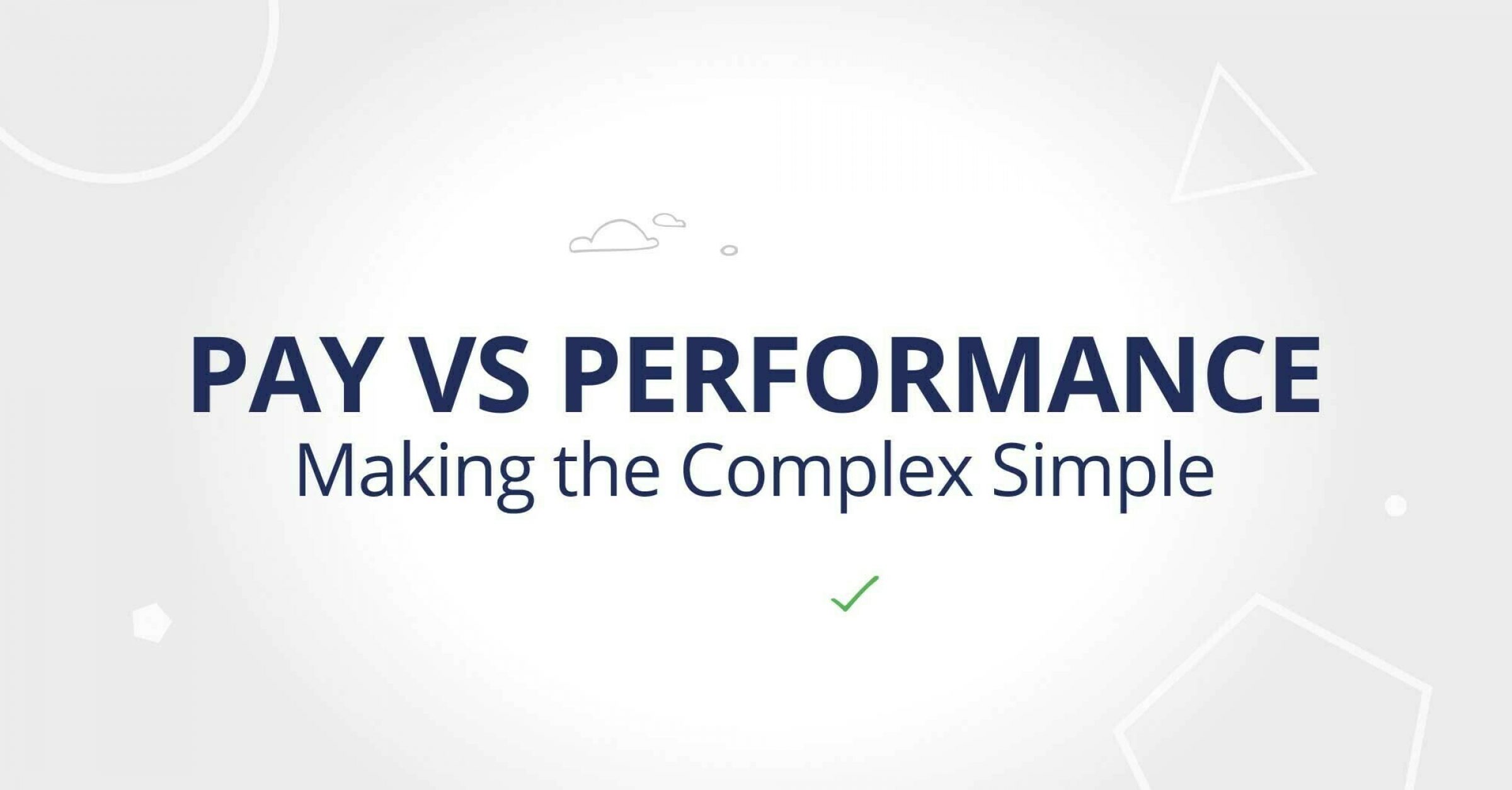“These new rules are massive and they are going to have a huge change in how we pay people,” says Terry Adamson, speaking on Own Up about the SEC’s recently introduced Pay versus Performance rules. “Sunlight is said to be the best of disinfectants and I think that’s valid in this point. I think putting all of these numbers on paper will help clean up some problematic paper practices.”
In a bid to make the complex simpler and shed some light on what’s now required by companies in the U.S. preparing their proxy statements, as a result of this rule’s introduction by the Securities and Exchange Commission (SEC), Chris Dohrmann and John Bagdonas of Global Shares’ Own Up sought the input of Terry Adamson.
Terry is a partner at Infinite Equity, a professional services firm known for its success in assisting companies to increase the effectiveness and return of their equity programs. An industry veteran, Terry has designed over 800 global employee stock plans and is a former global practice leader for a large HR consulting firm where he oversaw their equity and governance practices. He brings a wealth of knowledge to the topic, being very active in the equity community and having formerly served on the Financial Accounting Standards Board (FASB) Roundtable on Employee Share Options and on the Executive Advisory Committee of the NASPP (National Association of Stock Plan Professionals). Terry currently serves as the Chairperson of the Advisory Board of the Certified Equity Professional Institute (CEP) and the Society of Actuaries taskforce on stock option valuation.
Getting to grips with the new rules
First proposed in 2015 this ruling, in broad terms, requires companies to disclose executive compensation payments and actual company financial performance. It was officially adopted in August 2022 by a 3 to 2 vote. Terry maintains that the implementation timeline was incredibly aggressive with little guidance provided and likens it to a band-aid being ripped off in one swoop.
“The guidance from the SEC was probably only 90% of the way there, with the other 10% representing a kind of grey, tough area that really needed a lot more clarity,” Terry says. “It’s a lot more complex than it sounds, and it’s expected that many issuers will have to spend significant amounts of time on their filings, but this should get corrected over the coming years.”
Three big requirements:
First Requirement: Produce a new pay versus performance table. This is going to have three years of disclosures for a new definition of pay called ‘Compensation Actually Paid’ along with four different performance measures:
- Company total shareholder return (TSR),
- Peer total shareholder return,
- GAAP net income.
- A company selected measure
Second Requirement: An unranked tabular list of between three and seven measures that the company identifies as being most important to compensation actually paid.
Third Requirement: Some sort of descriptive relationship between compensation actually paid, to be used in conjunction with, or based on, each of the four financial performance measures. This could either be in the form of a narrative or a graph.
What these will teach us:
Transparency is key to all of this. Terry expands on these points further in the Podcast and explains how this new approach will encourage peer group companies to look at TSR figures and compare those to their own TSR. It will also reveal the Sharing Ratio, i.e. the percentage of the growth that is shared to the CEO and other named executive officers.
“What I find interesting is the excess of the compensation actually paid to the summary comp table compared to the excess market cap compared to the peer market cap growth, and divide those two things by each other,” he says. “The total value in the Summary Compensation Table should theoretically be the market rate of pay, as to what somebody has negotiated into the marketplace with. That’s their job offer, their base pay, their LTI. The grant date fair value of the equity, that’s the market rate of pay. The compensation actually paid now is what ultimately gets earned out at vesting and if compensation actually paid is greater than the summary comp table that tells me a story, presumably the company has done better than the rest of the market.”
On how a merger or acquisition will impact on the figures reported he says “your equity gets modified, because of M&A, and if there’s a modification, or if your equity gets cashed out, because your company gets purchased, it’ll still show up. You’ll still capture what is the value at vest compared to what it was at the end of the year, and there’s still be an incremental value. So in many ways, it’s very elegant. From an ivory tower perspective, my theoretical perspective, I think the calculation is very elegant and pure.”
Confusion in year one
This new measure of compensation is designed to move the executive-pay disclosure beyond just the snapshot or moment-in-time approach that has dominated in the past. Terry goes into detail about how this might potentially be confusing, especially since the figure could end up being negative, as may happen during a Bear Market.
“The fact that these remeasurements of equity at the end of the fiscal year or at vesting has to be done with “fair value”, rather than at “intrinsic value”, is adding a lot of rigour,” he explains. “Most companies historically have done that with what I’d call Intrinsic Value. This represents what’s the value of the asset today, if it were sold today. Fair value takes into account the future and the potential growth into the future of what somebody would pay for that.”
Terry then talks about how these changes are counter to what a lot of advisors and compensation consultants may have done in the past, pointing out that as a result a lot of Black-Scholes Model valuations and Monte Carlo simulations need to be run by companies.
“There are hundreds of companies that have filed early already,” he continues. “And all of them are choosing to put in these four graphs and they all look virtually identical. The x-axis shows the year and the y-axis shows the financial measure. They will typically add a secondary axis which is stock price over time.”
“This year, year number one, I think has really become a compliance exercise. They’ve released this new product, they’ve released this new reporting thing. I think they want to see what gets put out there. We’re just evaluating. We’re trying to comply. We’re trying to meet the rules and over time, it will evolve. It’s going to get a lot better.”
What’s next?
“There’s going to be a lot more guidance that has to be put out over the next year, there’s still a lot of grey technical areas,” Terry says of this implementation. He also references guidance from the SEC which includes some disclosure interpretations but notes that there is a lot more to do.
“Retirement eligibility. It’s still very vague on how to handle that. Does a retirement eligibility employee have an “unconditional right”? In addition, it’s still really vague on how to handle new IPOs? How do you disclose the financial measures of spin offs when those occur?”
“New compensation actually paid, right, it can be wild, it can be very volatile. It can be negative one year and positive the next year. It’s all over the map and any one single year doesn’t tell you a lot. But in the aggregate, when you look at a long term, over three years of summary comp table numbers, and three years of compensation actually paid, then sum them all together. That tells you a good story!”
He believes this information will be useful to potential investors, giving them a better understanding over time.
“Individuals, consumers in the marketplace, have access to this data in a really scalable way, which is great. We can do some real research on it, really study all of the footnotes that are going on in this table. There’s a really broad diversity,” he says. (I removed because it is the same as the next quote)
One thing he’d already like to see reduced is the amount of content going into the summary.
“The proxy is massive at this point,” Terry points out. “I’m hopeful that we can start seeing some consolidation of all these different tables, because a lot of them are saying the same thing. This new pay-versus-performance table, it’s a combination of all of those other tables in the Proxy. We’ve got to simplify this a little bit better. I think there’s ways that it can be consolidated in a much more transparent way.”
Listen for more
“These pay versus performance rules, as painful as they’ve been, are going to be really impactful for how people get paid,” Terry says in summation, concluding with how he believes that the rules are theoretically really sound.
“I think this year is a compliance exercise, but we’ll see what happens in year two, year three and year four. Overall, the new rules will be really helpful for investors.”
Listen to the podcast now to hear the full conversation.
Please Note: This publication contains general information only and Global Shares is not, through this article, issuing any advice, be it legal, financial, tax-related, business-related, professional or other. The Global Shares Academy is not a substitute for professional advice and should not be used as such. Global Shares does not assume any liability for reliance on the information provided herein.








